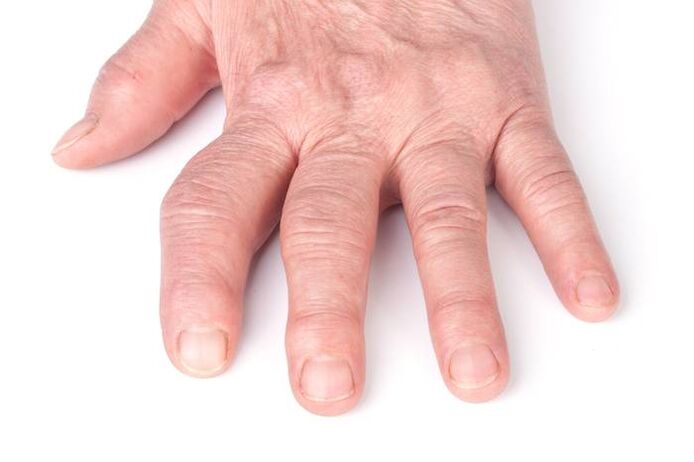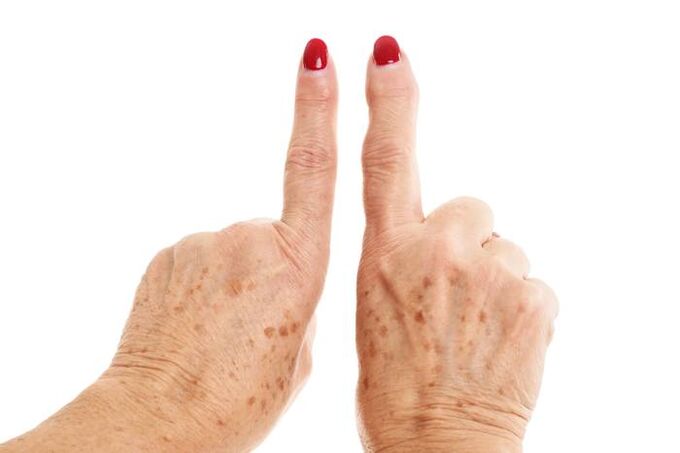Deformative osteoarthritis (osteoarthritis) is a progressive pathology that leads to dystrophy and degeneration of articular surfaces and damage to cartilage tissue, complete destruction of the joint area.
Deformative osteoarthritis is usually found in old age and in the presence of concomitant factors and diseases, is often detected during examinations, but does not manifest itself clinically.
Deformative arthrosis is the most common and widespread joint pathology. It occurs in 70% of all joint diseases.
Reasons
The exact cause of osteoarthritis deformity has not yet been clarified, but some factors have been identified that reliably increase the likelihood of its development. First of all, these are general aging of the body and dystrophic events in the tissues, changes in cartilage and joint capsules.
Factors influencing the development of osteoarthritis can be divided into:
- external - they include overload of the joints (for example, due to lifting weights), permanent injuries, occupational effects, hypothermia of the joints,
- internal - this is the effect of heredity with excessive elongation of ligaments and joints, ovarian dysfunction and climacteric changes in women, vascular accidents, circulatory disorders in cartilage tissues, obesity.
Deformative osteoarthritis may include alcoholism or myxedema, acromegaly or hormone therapy, congenital dislocation of the hip, Marfan syndrome (an inherited disease characterized by excessive joint mobility and elongation of the tubular bones) as one of the symptoms. joint stiffness)
Stages of development
There are a number of successive stages in the development of deforming osteoarthritis:
- Decreased water content of cartilage causes it to thin and dry out,
- formation of defects and cracks in cartilage,
- destruction of cartilage with simultaneous sharp narrowing of the articular cavity,
- loss of cartilage from the edges of the bone,
- compensatory compression of the ends of the bones left without a cartilaginous surface,
- disorders of the extremities, fractures and dysfunction of the limbs.
Symptoms of deforming osteoarthritis
First of all, deformity is the main manifestation of osteoarthritis
- pain in the joint, exacerbated after exercise or at night,
- individual joints are affected,
- affected joints are not symmetrical,
- at the same time there are no general manifestations of joint damage,
- no fever
- no strong redness in the joints,
- there is no change in the analyzes.
The process often occurs in the ankle, knee, hip or interphalangeal joint.


If the disease progresses to the point of cartilage destruction, a painful blockage of the joint occurs, with severe pain that prevents the legs from moving and stops it while walking. This is due to the entry of cartilage fragments or small bone fragments (joint "mice") into the joint space.
Nodular, very rigid formations of joints are seen in the phalanges, the joints are not very deformed, the muscles do not atrophy and there is no ankylosis (immobility of the joints).
Inside the joints, when moving, a gravel is heard due to the uneven surfaces rubbing against each other.
Pain and limited mobility can cause contractures (muscle cramps) that shorten the legs or arms.
Manifestations of osteoarthritis are similar to different forms of arthritis, primarily to be distinguished from rheumatoid arthritis.
Diagnostics
There is no typical criterion for the diagnosis of deforming osteoarthritis, it can only be recognized externally by the nodes in the phalanges of the fingers. Suspected of osteoarthritis:
- typical joint damage,
- long-term development of the disease for many years,
- elderly patient.
The diagnosis is based on clinical manifestations and X-ray data before the onset of pain syndrome.
There is a change in the narrowing of the joint space, flattening and deformation of the joint surfaces, instability in the area with dislocations and subluxations, marginal bone growths, osteosclerosis (excessive increase in bone density).
As the process progresses, bone spines and blisters appear, and the joint space may be wedge-shaped.
The study is completed with an arthroscopy, a blood test with no signs of inflammation.
A study of periarticular fluid is required.
Treatment of deforming osteoarthritis
Treatment is carried out by traumatologists and orthopedists.
The treatment of deforming osteoarthritis depends on the degree of involvement of the joints in the process, as well as the duration of the lesion and the presence of pain.
Initially, conservative therapy is used.
- reduce joint stress,
- lose weight,
- Use of metabolites - aloe or vitreous body intramuscularly in courses,
- use cartilage regeneration stimulants in intramuscular injections in courses.
Completes treatment:
- use of quinolone drugs,
- anti-inflammatory therapy.
If there is inflammation in the joint, the course of hormones in the joint is indicated.
A massage, physiotherapeutic effects, mud therapy, thermal effects are also used. Spa treatments are helpful.
In advanced cases, surgical treatment helps - joint arthroplasty. In the future, joint relaxation, weight loss, walking with a stick or armpit support, physiotherapy exercises are indicated.
Forecast
Without proper treatment, deforming osteoarthritis progresses slowly but steadily. Causes disability and significant joint dysfunction, movement disorders. Therefore, when the first signs of osteoarthritis appear, active therapy lasting 1-2 months is indicated.



































